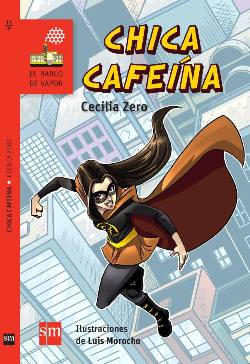A Brave New World: The indie publishing option for short fiction
In recent posts, I’ve covered several ways for a short fiction writer to repackage and remarket their backlist (previously published stories), including:
- Selling to magazines and anthologies that accept reprints (selling second rights);
- Selling to foreign language markets that accept stories that have previously appeared in English markets and will do translations for free;
- Selling to audio and podcast markets; and,
- Publishing multiple stories together as a collection to a traditional publisher (including reputable small presses).
This week, I’ll finish this series by dealing with another publishing option: independently publishing your stories yourself, including both publishing your backlist as well as an option that I do not recommend, that of originally publishing your stories yourself.
What Are Your Options?
Any writer now has the ability to package their stories into ebooks, either as individual stories or as book-length collections, and to sell them via all of the major ebook retailers (e-tailers) or the writer’s own website, without the need for any third-party publishing intermediary. For collections, a writer also has the option of publishing a print-on-demand (POD) edition.
The advantages include having full control over how your collection is produced, plus a much better royalty rate (more on that later). The disadvantages are the amount of work required (all that control means you have a lot of decisions to make and tasks to complete) and discoverability (easy of indie publishing means that you have a lot of competition).
What I Won’t Be Telling You
I’m not going to even attempt to go into the “how” of indie publishing. Why? Well, first, because I’d need another entire blog series to do that justice. Second, there are ever so many sites out there (and tools) that will help you with that. Finally, the indie publishing field is changing weekly. Whatever I wrote here would be out of date in a month (or less). I will, however, tell you what you will need to accomplish to indie publish a collection.
Indie Publishing is NOT for First Rights Sales of Short Fiction
Before I go any farther, let me state my very strong opinion: indie publishing is an excellent option for your backlist, especially for a collection, but I strongly advise against it for first rights sales.
In part 3, I discussed the various benefits of writing (and selling) short fiction. Go back and read that post before you decide to take a route of indie publishing your unsold short fiction. A quick review of that post will show that you’ll be forsaking almost all the benefits of a traditional short fiction career approach.
Building a short fiction career the way that I’ve laid out in this series is fully achievable with work and dedication, and will bring you the full set of rewards outlined in part 3 as well as providing you a base from which to launch a career in novels.
Most importantly, if you publish your short stories yourself, you will have no gauge for knowing whether your fiction is any good or whether your writing is improving. If editors of magazines and anthologies keep rejecting your stories, then your writing isn’t good enough yet. Don’t think of those editors as gatekeepers, blocking you from reaching readers. Think of them as your coaches, advisors, and protectors. They are helping you become a better writer and protecting you from exposing your work before it has reached a professional level for your craft.
So please, don’t damage your career by trying to find short cuts. If you want to be a professional writer, you have to become one by learning your craft and your profession. Selling to professional short fiction markets is the easiest and surest way of knowing when your writing has reached that level.
Indie Publishing a Collection
But what about when you’ve sold a bunch of stories to professional markets and you’re considering publishing a collection? Similar to my above position, I would also still recommend doing collections via traditional publishing, as described last week in part 30. Again, there are significant upsides to doing a collection with a traditional publisher, including a small (but reputable) press.
Sign the right contract ensuring that the rights to the collection revert to you after a reasonable time and then indie publish a new edition of the collection once that happens. I did this with both of my English-language collections. Impossibilia is now out of stock with PS Publishing, so I’ve released my own ebook edition and will shortly be releasing my own print edition. Similarly, I’ve released my own ebook edition of Chimerascope, but have left the print edition with ChiZine Publications because I think they can do a better job with print distribution.
Doing it Yourself
If you are considering indie publishing a collection, either your own edition after rights revert to you from your original publisher, or a first edition, then there are a number of things you need to accomplish to do it professionally.
First, you’ll still need to do everything that I described in part 30 about publishing a collection (except for the marketing part): selecting the stories, deciding on sequence, etc. Go back and read that post if you haven’t already.
Becoming a Publisher
Next, understand that if you go the indie route, even with only your backlist, you become a publisher as well as a writer. That means you need to become conversant with the challenges and possible approaches, I’d strongly recommend (again) that you spend time reading Dean Wesley Smith’s “Thinking Like a Publisher” series as well as Kristine Kathryn Rusch’s “Business Rusch” series. Both contain a wealth of excellent and free advice. Just be warned—you have a lot of homework to do. Do that homework.
Research the Retailers
Next, research the major book retailers and understand their terms of service. There are too many for me to list here, but the top ones include Amazon (still the 500-pound gorilla), Kobo (my pick for the up-and-coming challenger), Apple (through their iBookstore on iTunes), Barnes & Noble, and Sony. Others include DriveThru Fiction and OmniLit / AllRomance.
In addition, a number of aggregator distributors exist who provide a single route into a variety of the major retailers (but will take their own royalty cut). The longest established is Smashwords, but Draft-to-Digital is becoming a popular alternative. XinXii is a European-focused option, as well. The main advantage of these aggregators is that they provide an easy route into the iBookstore for Apple (and into Barnes & Noble for non-US writers like me) and into libraries. You can also pick up some sales from the aggregator’s own retail channel. OmniLit also offers an option to get into the iStore.
In terms of POD options, the two major ones are CreateSpace (Amazon) and Lightning Source, both of which now provide indie publishers routes into bricks & mortar bookstores and libraries.
The terms and conditions for working with each of these retailers vary, so you’ll need to research each of them separately. But to simplify things for this post, if you’re selling ebooks on Amazon and Kobo, you’ll earn a 70% royalty on the selling price of an ebook if it’s above a certain minimum price (at least $2.99 for Amazon and $1.99 for Kobo), and 35% if it’s below that threshold. (Note: my numbers assume you’re going direct to Kobo rather than through an aggregator). So, for example, an indie-published collection priced at $6.99 will earn the author about $5.00 for every copy sold. There are many more pricing considerations, especially for POD books, so again, do your homework.
Next Week
Next week, I’ll finish both this entire series as well as this topic of indie publishing your short fiction, with a look at the major tasks that you need to accomplish as a publisher of your own work.
Next Week: A Brave New World: The indie publishing option for short fiction (conclusion)
As always, please feel free to add comments and questions to any of the posts in this series, and I’ll respond as best (and as soon as) I can. Or contact me through my website if you’d rather.
I wrote these posts in a very specific sequence, with each entry building on previous ones. You can read my earlier posts here.
~~~~~
PLAYING THE SHORT GAME — The Book!
I am thrilled to announce that I have now repackaged the 32 separate posts that make up this blog series into a book titled Playing the Short Game: How to Market & Sell Short Fiction. The book is completely updated and reorganized, with new material not in this blog series, plus an introduction from multi-genre, multi-award winning writer and editor, Kristine Kathryn Rusch. Here’s an extract from Kris’s intro:
Douglas Smith is the best person to write this book. … He’s one of the few people who has probably published more short fiction than I have, and in more countries, and more high-paying markets. He loves the short story as much as I do, and he’s good at writing them.
He’s just as good at the business side of the profession. He knows more about marketing short stories to other countries than I do. He understands how to manage short fiction contracts very well. He’s up-to-date on 21st century publishing practices, and he has a toughness that the best business people need.
We short story writers have needed a book like this for decades. I’m glad Doug decided to write it. Read and reread this volume. Because you’ll learn something each time you do. And take Doug’s advice. It’s spectacular.
—Kristine Kathryn Rusch
More information on the book, including full buying links for all major retailer sites, is available on my website here.
As a special offer to Amazing Stories readers, I’m offering discounts in my bookstore. Get the ebook or print edition at a discount by using the coupon codes AS-SHORT-E or AS-SHORT-P respectively at my website bookstore. Enjoy!











1 Comment